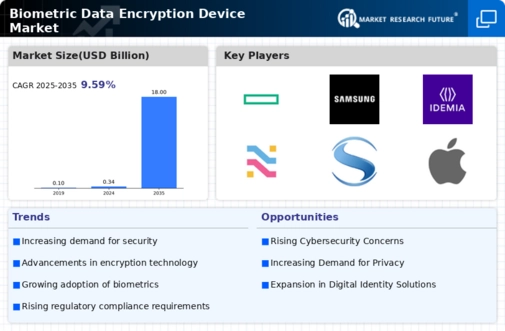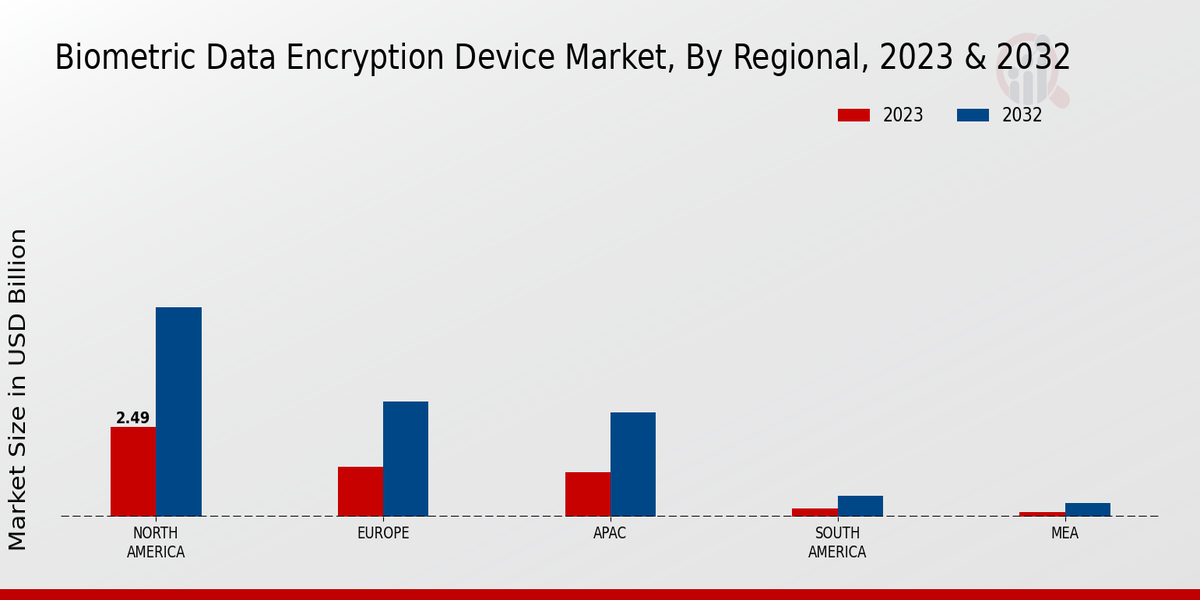The Biometric Data Encryption Device Market is characterized by rapid advancements in technology and increasing concerns surrounding data security. This market has seen significant growth due to the rise in cyber threats and the need for robust solutions that can protect sensitive information. Companies involved in the design and production of biometric data encryption devices are striving to leverage cutting-edge technology and innovative methods to enhance their product offerings. As competition intensifies, firms are focusing on unique selling propositions, research and development activities, and strategic collaborations to enhance their market presence.
The integration of artificial intelligence and machine learning into biometric systems is also driving developments, as companies are exploring ways to provide more efficient and secure encryption methods for biometric data. The competitive landscape is not only influenced by technological advancements but also by regulatory frameworks and customer awareness concerning data protection.Hewlett Packard Enterprise has established itself as a key player in the Biometric Data Encryption Device Market due to its comprehensive portfolio of security solutions aimed at protecting critical data.
The company leverages its strong brand recognition and industry experience to address the growing demand for biometrics in data encryption. Hewlett Packard Enterprise emphasizes innovation by incorporating advanced biometric authentication features in its products and services, which allows it to cater to various sectors such as finance, healthcare, and government. The company's strong commitment to research and development enables it to stay ahead of market trends and offer cutting-edge encryption solutions that meet the evolving security needs of its customers.
Additionally, Hewlett Packard Enterprise benefits from its extensive distribution network and established partnerships, enhancing its ability to deliver high-performance biometric data encryption devices globally.Samsung is another prominent contender in the Biometric Data Encryption Device Market, noted for its technology-driven approach and extensive range of devices equipped with advanced encryption capabilities. The company's focus on integrating biometric sensors and encryption technologies into its products sets it apart from competitors. Samsung's strong R&D capabilities allow it to innovate continually, enhancing the security features of its biometric data encryption devices to provide users with greater assurance and confidence in data safety.
Furthermore, Samsung capitalizes on its global brand presence and consumer loyalty, which helps it gain a competitive edge in various markets. The commitment to delivering premium quality products with robust security features positions Samsung favorably within the market, appealing to both individual consumers and enterprise clients who require reliable biometric solutions for data protection.


























